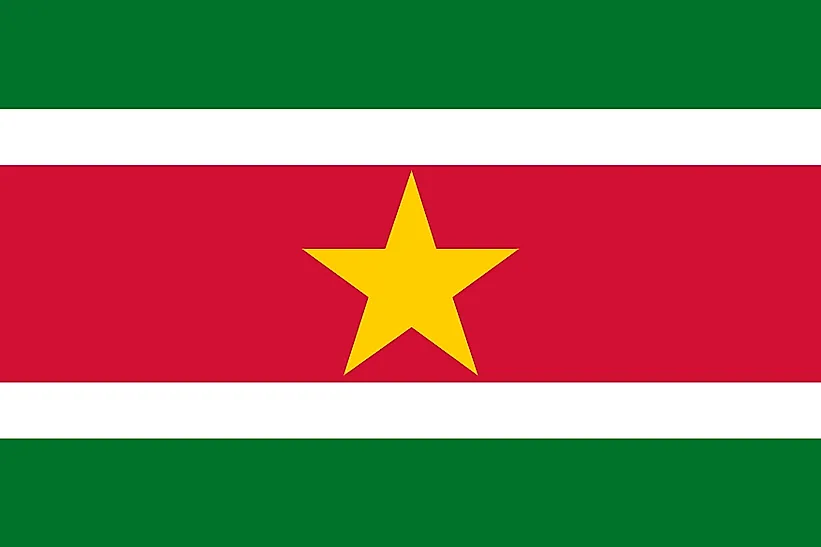
Suriname
| Continent | Americas |
| Capital | Paramaribo |
| Population | 585,824 |
| GDP | $8.55 Billion |
| GDP per Capita | $15,200 |
| Dialing Code | +597 |
| ISO Code (2-letter) | SR |
| ISO Code (3-letter) | SUR |
Suriname Landscapes






About Suriname
Welcome to Suriname, a nation of remarkable diversity and natural wealth. With approximately 600,000 people across 163,821 square kilometers, Suriname combines extraordinary biodiversity with unique cultural fusion, standing as one of South America’s most ethnically diverse countries.
Geographic Features and Natural Beauty
Suriname’s geography encompasses diverse landscapes from coastal plains to pristine rainforests. The country features the Amazon rainforest covering about 80% of its territory, the Central Suriname Nature Reserve, and extensive river systems.
The landscape includes tropical rainforests, savannas, and mangrove swamps. The country’s varied terrain creates diverse ecosystems supporting unique wildlife including jaguars, giant river otters, and hundreds of bird species.
Protected areas include the Central Suriname Nature Reserve, a UNESCO World Heritage site covering 1.6 million hectares. The country’s commitment to conservation focuses on preserving its pristine rainforests while promoting sustainable development.
Cultural Heritage and Traditions
Surinamese culture represents a unique fusion of Indigenous, African, Asian, and European influences. The country’s heritage includes distinctive architecture in Paramaribo, diverse religious traditions, and rich artistic expressions.
Traditional arts include wood carving, textile arts, and various music styles including kaseko and kawina. Cultural practices feature diverse religious ceremonies, festivals like Divali and Eid, and unique culinary traditions.
Surinamese cuisine reflects its multicultural heritage, featuring dishes like roti, pom, and nasi goreng. The tradition of multicultural celebration and community gatherings remains central to national identity.
Historical Journey
Suriname’s history spans from indigenous settlements through Dutch colonization to independence. The country’s unique development has created one of the most diverse societies in South America.
Significant periods include Dutch colonization, the plantation era, the arrival of various ethnic groups as laborers, and independence in 1975. The country’s peaceful coexistence of different cultures has become a model of diversity.
Modern Economic Landscape
Today’s Surinamese economy focuses on natural resources, agriculture, and eco-tourism. The country has significant mining resources including gold and bauxite.
Recent initiatives emphasize sustainable resource management, eco-tourism development, and agricultural diversification. Suriname’s natural wealth and cultural diversity support its economic potential.
International Relations and Global Position
Suriname maintains active participation in Caribbean and South American organizations while fostering global partnerships. The country’s environmental stewardship and cultural diversity extend its diplomatic influence.
Did You Know?
• Suriname is one of the few countries where you can find a synagogue next to a mosque?
• The country has one of the highest percentages of rainforest coverage in the world?
• Dutch is the official language, making it unique in South America?
• The country is home to the rare blue poison dart frog?
Conclusion
Suriname represents a unique combination of cultural diversity and natural preservation. From its pristine rainforests to its multicultural capital, from its traditional practices to its modern developments, Suriname continues to evolve while preserving its distinctive character. As it addresses challenges including sustainable development and economic diversification, Suriname remains committed to progress while maintaining its position as a model of cultural harmony and environmental stewardship.